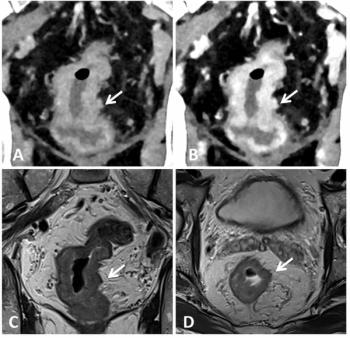
Role of gadolinium-based agents in NSF incidence remains unclear
The controversial topic of nephrogenic systemic fibrosis featured prominently in this year’s European Congress of Radiology program. This scleroderma-like disorder has been linked to the administration of gadolinium-containing contrast media. Despite the growing wealth of data on incidence of the disorder, however, researchers remain unable to pin down the causal trigger.
The controversial topic of nephrogenic systemic fibrosis featured prominently in this year’s European Congress of Radiology program. This scleroderma-like disorder has been linked to the administration of gadolinium-containing contrast media. Despite the growing wealth of data on incidence of the disorder, however, researchers remain unable to pin down the causal trigger.
All cases of NSF reported since its first identification in 1997 have involved patients with advanced renal disease. Most of these patients had previously undergone imaging with a gadolinium-based agent on one or more occasions.Findings released in Vienna suggest that evidence is not sufficient to indict all gadolinium-based agents under the same suspicion. Dr. Vincent Launay-Vacher and colleagues at the Pitié-Salpêtrière Hospital in Paris retrospectively reviewed data from 308 patients with renal insufficiency who underwent MRI with and without gadolinium from July 2005 to July 2006 at nine sites across France. Nearly four-fifths of the patients were given gadolinium-containing agents, with 57% receiving gadoterate meglumine and 2.3% receiving gadodiamide. Investigators found no evidence of NSF during follow-up despite reports in the clinical literature detailing the potential risks, particularly for those patients receiving gadodiamide.
The findings validate previous ones that show macrocyclic gadolinium chelates are safer than those having a linear structure with excess chelate. Linear agents, such as gadodiamide, seem more likely to release free gadolinium into the body, Launay-Vacher said.
This distinction between MR agents with differing chemical structures has also been seen at the University Hospital Herlev in Denmark. When radiologists used gadodiamide to perform contrast-enhanced MRI on renal patients, 28 NSF cases were recorded after 370 contrast injections, according to Prof. Henrik Thomsen, a professor of radiology at the Copenhagen-based hospital. The team then switched to using a macrocyclic agent with this patient group. More than 150 injections later, no cases of NSF have been observed.
In a separate study reported at the ECR, radiologist Dr. Gertraud Heinz-Peer and colleagues at the Medical University of Vienna reviewed the records of 552 patients with chronic renal failure undergoing peritoneal dialysis and hemodialysis who were scanned with gadolinium-enhanced MR between 1997 and 2007.
The investigators assessed the number, type, and cumulative doses of contrast injections, as well as other potential NSF cofactors. Their data validated previous reports on NSF prevalence. They did not, however, find a correlation between cumulative dose and the specific type of contrast agent used.
Experts speaking at the ECR were agreed that gadolinium has some part to play in NSF occurrence. The question they are still struggling to answer is what exactly that role is. Electron microscopy studies have identified gadolinium deposits in fibrosed skin taken from patients, Dr. Christoph Herborn, a radiologist at the University Medical Centre in Hamburg, Germany, told delegates attending a satellite symposium organized by GE Healthcare. How the chemical element got there, however, and its significance remain unclear.
“The gadolinium found in skin biopsies, we don’t know if it is in a free or a bound state. We also do not know whether it is retained there after the development of the disease or deposited there beforehand,” Herborn said.The incidence of NSF in patients with end-stage renal disease who receive gadolinium-based contrast is approximately 2% at present. In other words, 98% of patients with an apparently identical profile do not develop any symptoms. In addition, at least two patients developed NSF who have never been injected with gadolinium, Herborn said. He recommends that radiologists discuss the prevalence of NSF with renally compromised patients and that the MR community work closely with nephrologists to identify at-risk patients.
Further advances in MR technology may one day reduce the number of examinations requiring contrast. But for now, in situations where gadolinium-enhanced MRI is indicated, radiologists can reduce the risk to patients by keeping the dose as low as possible, Herborn said.
He urged delegates to use a single bolus of contrast when examining morphology and function, instead of administering separate doses. Strategies for maximizing the signal obtained from a given dose of contrast were also recommended. These included imaging with parallel acquisition, using venous compression during MR angiography, and switching from 1.5T to 3T.
“NSF is here, now. It is a very serious, debilitating disease that has to be kept in mind when we are dealing with patients with impaired renal function. But we do not want to destroy our wonderful MR technique. For many, MR remains the imaging method of choice,” Herborn said.
-By H.A. Abella and Paula Gould
Newsletter
Stay at the forefront of radiology with the Diagnostic Imaging newsletter, delivering the latest news, clinical insights, and imaging advancements for today’s radiologists.



























